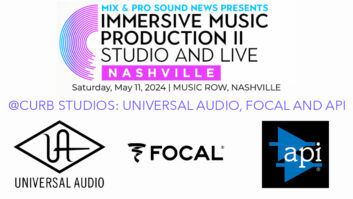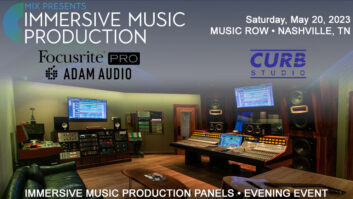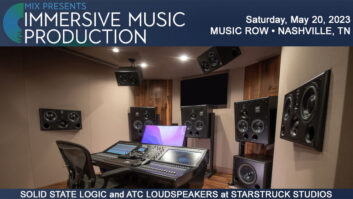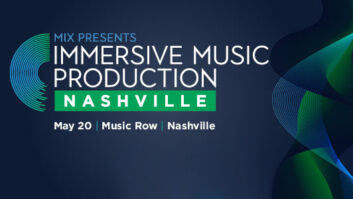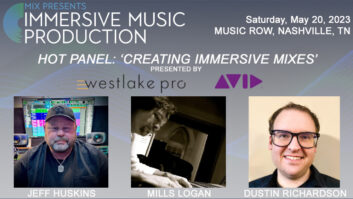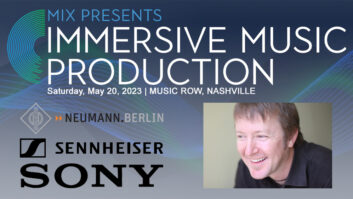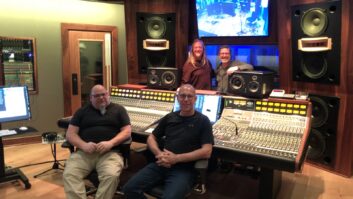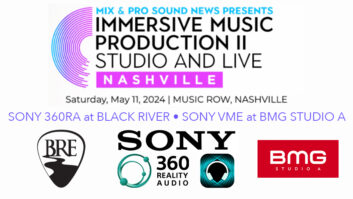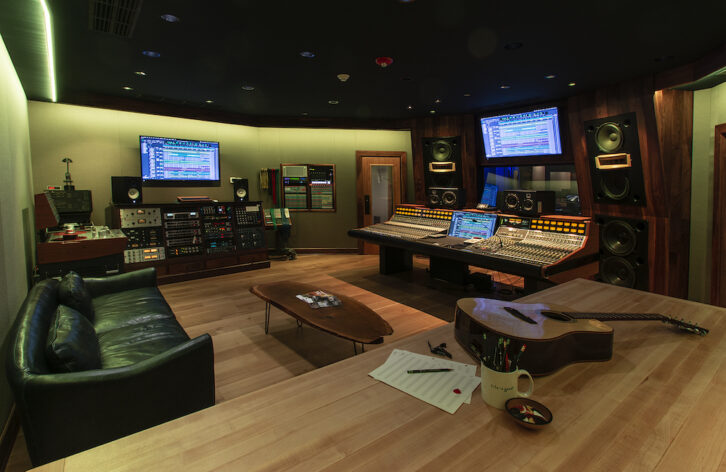
Nashville, TN (May 30, 2023)—Staying current is a challenge facing any studio, perhaps doubly so for an A-list facility with a decades-long legacy. The rich history—the artists who have recorded there, the mic collection, the racks of analog gear, the dirt in the walls that gives the live room a one-of-a-kind tone—can be both a drawing card and a curse in a recording world now defined more by in-the-box than through-the-console.
Curb Studios, an anchor on Music Row since the early 1980s, when it was known as Stargem Studios, on through the purchase and first technical overhaul by Curb Records in 1996, was fully aware of the potential negative effects of downtime when the team took a look around the facility five or six years ago and started thinking about how to best future-proof the room by adding video and content capture infrastructure.
Over the previous two years, the facility hosted the production team behind the hit television show Nashville. Simultaneously, the Curb label had been booking more time to capture video content for its artists, while other clients, both regular and new, were popping in for more one-off shoots. Camera equipment and crews take up a lot of floor space, they found, and the time required for setup and tear-down was significant. So if they wanted to grow that part of the business, they had to figure out a new way to do it.
Then, while in the early stages of putting together a plan to present to the management team at Curb, the Euphonix CS3000 console in Studio A, a workhorse for so many years, “finally gave up the ghost,” says David Bates, staff engineer and studio manager.
“When the console finally failed, our interim fix was to expand our Burl converters and do everything in the box,” he explains, “but that didn’t work for how we like to track, live with bands in the room, so we started looking at consoles and decided on the API AXS. Once we picked the console, we knew that we were going to have to redo the control room and the wiring and all that, so we soon started talking about all the things we would like to see done.”
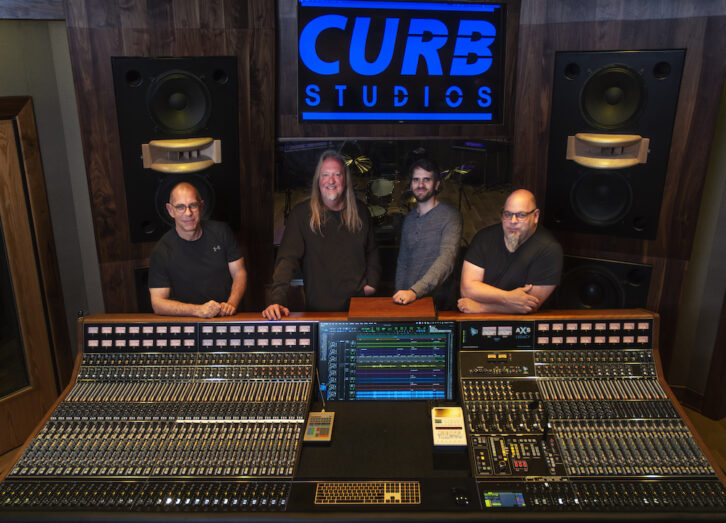
Those decisions starting back in 2019 led to a major renovation of the entire facility that took place over the next three years and included a full 18 months of downtime, during which Bates and chief engineer Craig White worked primarily across the street at Curb-owned sister studio Curb 28, formerly known as Loud and Masterfonics, which, as it stands today, is next in line for a facility-wide makeover.
Although the renovation’s start date had been determined long in advance of the Covid-19 outbreak, in a sense the timing couldn’t have been more fortuitous. The mayor of Nashville announced a citywide lockdown on a Friday in March 2020. The demolition crew had already been scheduled to begin work the following Monday.
WIRING THE CONTROL ROOM
Craig White’s studio career began in the early 1990s as an intern-turned-assistant at nearby SoundStage Studios. He arrived at Curb as part of the team that worked on the initial renovation in 1996, led by general contractor and studio builder Dave Mattingly. White joined the staff soon after, and nearly 25 years later found himself again part of the renovation team, along with Bates, Mattingly and longtime Curb jack-of-all-trades Aaron Bowlin.
“We didn’t expand the control room, but we did take the walls back to the studs, move the console position six feet forward and basically built a new front wall to accommodate the Augspurger monitors,” White explains. “It was built in the early 1980s and had that general vibe. It had a compression ceiling, and we took that out. It had a raised floor for the console and cabling, and we took that out. Then we cut new troughs in the concrete because the old wiring was in series around the room, and we switched to all direct wiring so that the path is much shorter from the patch bay and it’s now direct home runs to the panels in the tracking room and booths. We removed two-thirds of the wire length and achieved technically better frequency response.”
Studios A, B and the new Studio C are all connected for audio recording and wired for cameras, so a session in Studio A can now make use of the facility’s 11 room-plus-iso spaces. FOR KING & COUNTRY, one of Curb|Word Entertainment’s major artists, is likely to do just that, White says, as they have a large band and like to work together, at the same time. They also like low-end, apparently, and whether or not they were the driving force in selecting the Augspurger monitors, they at least played a part.
“FOR KING & COUNTRY’s music has really low sub-bass material,” White notes. “A lot of music is moving that way. I had blown up a couple of regular woofers, so with as much work as we were doing with [FOR KING & COUNTRY], we decided to get dual 18-inch subs. Now we have bottom end for days. And when we’re doing those records that make use of the low end, it’s amazing. You can hear down to just about nothing.”
LIGHTING THE LIVE ROOM
“Craig [White] and I kept pushing for the video infrastructure,” says Bates, who came to Curb Studios 15 years ago as White’s assistant and who now holds down Studio B when not tracking in A. “Every mic panel in the entire place has an an HD- SDI video send and return in it. Every one of those shows up at a Blackmagic matrix switcher, which allows us to route any video input to any video output for any signal we would put in the space.”
The installation of fixed, discreet cameras in every studio and iso booth, which would be controlled remotely, has not happened yet, though it is in the plans and the wiring is all in place. For all intents and purposes, with the new infrastructure backbone, the facility has been future-proofed.
In the here and now, however, it’s the new lighting grid that draws attention and creates a bit of excitement. How they end up using it remains to be seen, though it’s already being put to the test. It’s only been nine months since the API console was brought in, and only about six months since the new facility’s debut to the community.
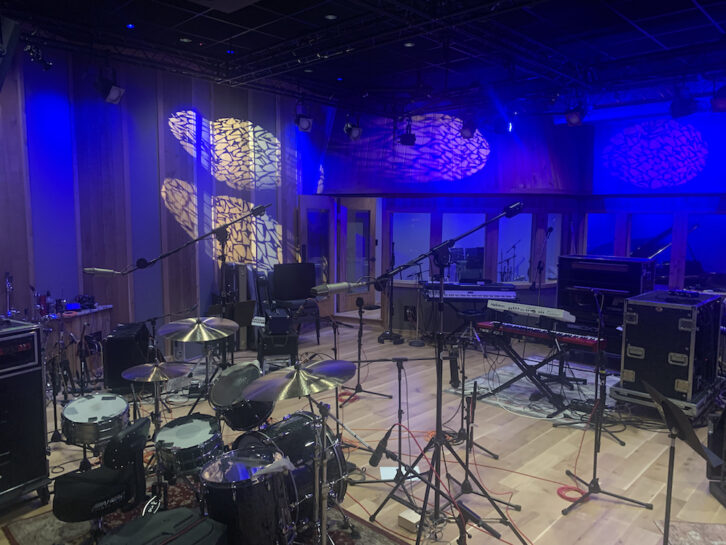
“The grid is static in the air, so we do have to get up on a ladder to reconfigure things,” White explains. “But we designed it with mic lines up there and there are lines for a P.A.—we have a small L-Acoustics P.A. hanging up there right now. There are also DMX lines for lighting control and video lines as well, so we can hang cameras.
“The thought from the beginning was that floorspace is always at a premium in a studio, especially when a full band is in there,” he continues. “When we were putting the grid in, we thought, ‘Hey, we can hang our room mics up there.’ And now we do. Through a partnership with DPA, we are hanging one of their S5 Decca Tree systems, which we can position anywhere we want. The DPA Decca Tree calls for five mics, which is the three out front like a traditional tree—we use 4006s—plus two more to the rear for surround capture. It doesn’t always have five mics hanging on it, of course, but it has the ability to do left-center-right, plus right-rear and left-rear. I can see how it may become the basis for capturing an immersive music project.”
While a new floor was laid down in Studio A’s live room, along with the stretching of new fabrics and a few cosmetic upgrades, the walls and ceiling were not touched. It’s a large room with a beloved, unique sound, after all. You don’t mess with the walls.
WAIT, THERE’S MORE!
The team did, however, knock down some walls and remake some spaces throughout the rest of the facility, figuring that as long as they were going to take down Studio A for a short while, they might as well take care of the rest of their wish list at the same time. Most notably, a new mix room was added, Studio C, and they expanded the kitchen and reconfigured common spaces to make life more comfortable for clients.
“The building wasn’t laid out very well initially,” Bates says. “You used to have to walk through an outer alcove office to get to what was the CEO’s office, and then behind the CEO’s office, through the kitchen, was my shop. We knocked the walls out from the kitchen and that alcove office, and then the shop and the CEO’s office, to give us this very large space that would become Craig’s mix room, Studio C. When we add Atmos capability coming up, it will be in C. Then we also expanded the kitchen quite a bit, which has proven to be a good thing.”
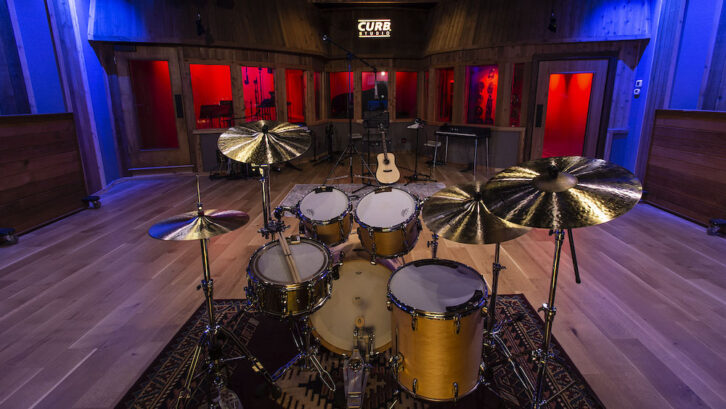
As it is shaking out, Bates works primarily out of Studio B, which is based around a Shadow Hills Equinox, Apogee Symphony and Pro Tools workflow, with Tannoy and Genelec monitoring. It has a small iso booth attached, used primarily for overdubs. White mixes in Studio C, listening through a pair of Focal studio monitors. Immersive mixes, and there have been quite a few of late coming out of the extensive Curb Records catalog, have been done by outside mixers, after White remixes the stereo versions to create stems. Much of his catalog work, restoration and remastering, also finds its way to vinyl.
“A big part of our business is catalog because we are part of the Curb|Word Entertainment label,” says White, giving a nod to Alex Powers, who manages the tape vault and archives, which date back to the early ’60s. “Right now in Studio C, I’m remixing the Sixpence None the Richer record. I’ve remixed some Tim McGraw and Jo Dee Messina and some of the older catalog, mixing these stems and then sending them to Jeff Balding to create the Atmos mixes. We’re releasing stuff on vinyl now, too, as well as Atmos. It’s kind of crazy when you think about it.”
